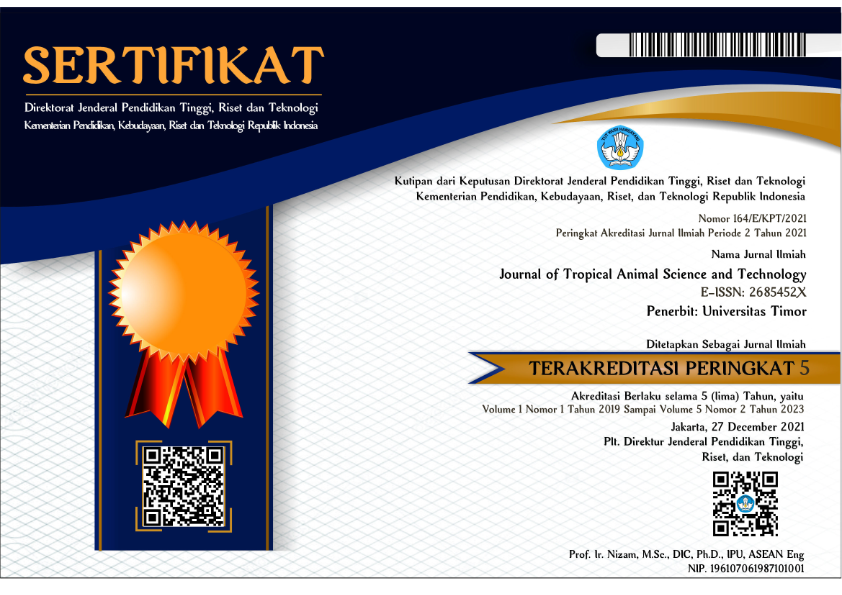Levels Protein and Fat of Yoghurt Made of Different Types and Number of Cultures
DOI:
https://doi.org/10.32938/jtast.v4i1.967Keywords:
Culture, Fresh Milk, UHT Milk, Yoghurt, Fat and Protein ContenAbstract
This research was carried out in June 2020 at the Chemistry Laboratory of the Faculty of Animal Husbandry, Nusa Cendana University, Kupang for testing protein and fat levels. This study aims are to determine the protein and fat content of yoghurt made from various types of milk, the protein and fat content of yoghurt made from different amount cultures, and to determine the interaction between the type of milk and the number of yoghurt cultures. Research material in the form of fresh milk, UHT milk, yoghurt cultures. The design used in this study was a completely randomized design (CRD) with a factorial pattern using 2 treatment factors, namely factor A in the form of type of milk, which consisted of: A1 = fresh milk, A2 = UHT milk (Ultra High Temperature) and factor B in the form of culture. yoghurt consisting of: B1 = Lactobacillus bulgaricus and Streptococcus thermophilus, B2 = Lactobacillus acidophilus, Lactobacillus bulgaricus, and Streptococcus thermophilus, B3 = Streptococcus thermophilus, Lactobacillus adhophilus, Lactobacillus bulgaricus, and Bifidobacterium animals. From the two factors above, there were 6 treatment combinations consisting of: A1B1, A1B2, A1B3, A2B1, A2B2, A2B3, each combination consisting of 3 replications so that there were 18 experimental sample units. The results showed that the type of milk and the number of bacterial cultures affected the fat content and protein content of yoghurt and there was an interaction between the type of milk and the number of different cultures on the percentage of fat and protein content of yoghurt produced. types of milk with different culture brands had a significant effect (P<0.05) on the percentage of yoghurt fat content. The results of the follow-up test with Duncan's test showed that the combination of treatment between the type of UHT milk and the culture Lactobacillus bulgaricus had a significant effect (P<0.05) on the percentage of yoghurt protein content in all treatments. It can be concluded that fresh milk has higher protein and fat content than UHT milk. The number of cultures 2 (Lactobacillus bulgaricus and Streptococcus thermophilus) produced yoghurt with the highest fat content and protein content.























